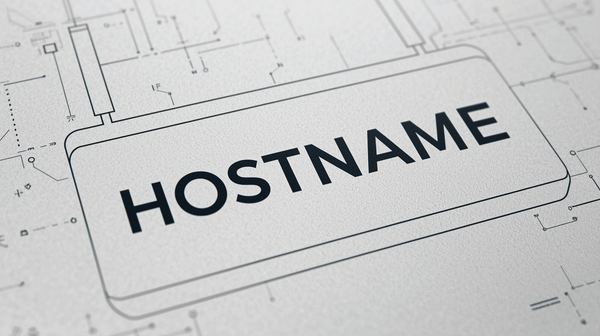Understanding TCP vs UDP: Key Transport Layer Differences
Learn the key differences between TCP and UDP in the transport layer. Discover how reliability, speed, and connection type impact network performance and application design.
Understanding the differences between TCP and UDP is essential in networking. TCP is a connection-oriented protocol that guarantees reliable, ordered data transmission, making it ideal for applications such as web browsing and file transfers. In contrast, UDP is connectionless, prioritizing speed and efficiency over guaranteed delivery, making it suitable for real-time applications such as gaming and streaming. By evaluating your application's reliability versus performance needs, you can select the appropriate protocol and optimize your network communication strategies.
Overview of the Transport Layer
The transport layer serves as a critical bridge in the TCP/IP model, facilitating seamless communication between applications running on different hosts.
This layer manages data segmentation, transmission, and reassembly, ensuring efficient communication across networks. It primarily employs two protocols: Transmission Control Protocol (TCP) and User Datagram Protocol (UDP).
Understanding the differences between TCP and UDP is essential for selecting the appropriate protocol for your application.
TCP operates as a connection-oriented protocol, guaranteeing reliable data delivery through mechanisms such as acknowledgments and sequence numbers.
In contrast, UDP is a connectionless protocol that prioritizes speed and efficiency over reliability.
Characteristics of TCP
When considering TCP's characteristics, you'll find that its connection-oriented nature is one of its defining features. This protocol guarantees reliable data transmission, making it vital for applications that require accuracy.
Here are three key characteristics you should know:
- TCP Reliability: TCP guarantees that data arrives intact and in the correct order, using acknowledgments and retransmissions to recover from lost packets.
- TCP Flow Control: It uses a sliding window mechanism, allowing the sender to adjust the data flow based on the receiver's capacity to prevent buffer overflow.
- Error Recovery: TCP detects errors and requests retransmission, ensuring data integrity.
Understanding these characteristics is essential for applications like web browsing, where precision is critical.
Characteristics of UDP
Although UDP lacks TCP's reliability features, it excels in scenarios where speed and efficiency are essential. Its low overhead enables rapid data transmission, making it ideal for applications such as live video streaming and online gaming.
With no requirement for a connection or session establishment, you can start sending data immediately. However, this speed comes at a cost: UDP doesn't guarantee delivery, so you might experience packet loss.
Despite this, the protocol's performance remains consistent, making it the preferred choice when occasional data loss is acceptable. By using UDP, you're prioritizing speed and minimizing latency, which is vital for real-time applications that require immediate feedback.
TCP Vs UDP: Comparative Analysis
TCP and UDP serve distinct purposes in networking, each with unique strengths and weaknesses that cater to different application needs.
Understanding the key differences will help you choose the proper protocol for your requirements:
- TCP is connection-oriented, ensuring reliable, ordered delivery of packets, making it ideal for applications where data integrity is essential.
- UDP, on the other hand, is connectionless, prioritizing speed and efficiency, suitable for real-time applications where occasional data loss is acceptable.
Choosing between TCP and UDP depends on whether you value reliability or performance, guiding your application design decisions.
Practical Applications and Use Cases
When selecting a protocol for your application, it's crucial to evaluate the specific requirements and performance expectations.
TCP vs UDP examples highlight distinct use cases: TCP suits applications like web browsing and file transfers, where data integrity is paramount, while UDP is ideal for real-time services such as video streaming and online gaming, where speed is critical.
For instance, when you download a file, TCP guarantees complete and sequenced data delivery, minimizing errors.
Conversely, in VoIP or online gaming, you prioritize low latency over perfect delivery, making UDP the better choice.
Understanding these practical applications helps you choose the proper protocol, facilitating peak performance tailored to your application's needs.
FAQ: TCP vs UDP – Common Questions Answered
1. What is the difference between TCP and UDP protocols?
TCP is a connection-oriented protocol that ensures reliable, ordered delivery. UDP is connectionless and faster, but doesn't guarantee delivery.
2. What are the complete forms of TCP and UDP?
TCP stands for Transmission Control Protocol, and UDP stands for User Datagram Protocol.
3. When should you use TCP vs UDP?
Use TCP for applications needing reliability, such as web browsing or email. Use UDP for real-time services like gaming, VoIP, or streaming.
4. Which is better, TCP or UDP?
Neither is "better" universally—TCP is better for reliability, while UDP is better for speed and low latency.
5. What are the protocol numbers for TCP and UDP?
TCP uses protocol number 6, and UDP uses protocol number 17.
6. What are some examples of TCP and UDP applications?
TCP: HTTP, HTTPS, FTP, SMTP
UDP: DNS, DHCP, SNMP, VoIP
7. How is TCP vs UDP security different?
TCP can use TLS/SSL for encryption and authentication. UDP relies on application-layer protocols like DTLS for security.
8. Can I download a TCP vs UDP PDF summary?
Yes, many CCNA and networking resources offer comparison PDFs that summarize TCP vs. UDP differences for quick study.



